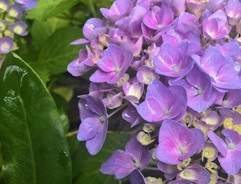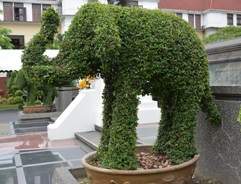Plant Guides
If you have ever wanted to know more about a certain type of plant, look no further than our fantastic selection of useful plant guides. Covering everything from bamboo plants to topiary we have taken great care to create these guides packed full of useful information covering types of plants, when and where to plant them as well as useful ideas on how to make the most of your garden.
Bamboos are valuable ornamental plants with attractive, lush evergreen foliage that can be used to add a tropical effect, style, movement and panache to any garden. Easy to grow and fully hardy, they come in almost 10,000 varieties.
Climbers are long-term investments for your outdoor space, offering ways to brighten up your vertical planting areas such as bare walls or simply providing beautiful flowers, lush foliage and a fabulous scent for your garden.
Climbing roses are quintessentially English and highly versatile - strong growing varieties are ideal for covering decorative obelisks, arches, walls, trellises and fences whilst shorter varieties can be trained around poles and tripods to form 'pillars'.
Whilst conifers are traditionally thought of as conical evergreen trees with a single, straight trunk and side branches, they actually come in a huge range of shapes and sizes, ranging from large trees to small prostrate ground cover plants.
Floribundas are stiff, bushy, upright shrub roses characterised by clusters of flowers borne repeatedly from summer through autumn (as opposed to hybrid teas which typically produce flowers singly on each stem). Each flower is smaller than hybrid teas but their presence in large clusters gives an impressive floral display.
Fruit bushes are a great way to add a productive quality to your ornamentals and enliven your garden borders with an abundant mix of flowers, fruits and, often, stunning autumn foliage colours. Consider building soft fruit bushes, canes and vines into your planting schemes to add a different twist to borders.
Fruit trees including apples and pears, peaches, nectarines, apricots, plums and cherries, as well as nut-bearing fruit trees such as walnuts and almonds. You don't need to have an orchard to enjoy home-grown fruit; a tree on a dwarf root stock or training your trees into space-saving forms such as espaliers, cordons and fans, they can be perfect for smaller gardens too.
Ferns are fascinating, highly versatile, ancient forms of plant life dating back to the Carboniferous period. Preceding flowering plants, they have been growing essentially unchanged for 360 million years.
Shrubs are small to medium-sized woody plants distinguished from trees due to their multiple stems branching from the base and shorter height, although some plants can grow into either shrubs or trees depending on the growing conditions. They provide an array of foliage colours, vibrant stems, stunning flowers, berries, and beautiful fragrances.
Heathers are low maintenance evergreen bushes producing urn-shaped flowers ranging from white to rose to deep purple, which are borne on spikes above a compact mass of low-growing or spreading foliage. When people refer to heathers they are technically talking about heathers and heaths, both of which belong to the Ericaceae family.
Hedges are essentially living walls which can serve a decorative or practical function, or both. You can find cheap and easy to plant hedging plants that generally take between 3 and 5 years to establish, or opt for larger, more mature plants which if well cared for will produce a solid hedge almost immediately.
Growing herbs, or even creating a herb garden, is easier than you think. All you need is good light conditions in a free, well-drained soil or even on a windowsill. Herbs are an essential ingredient in a wide range of foods, so growing your own means a fresh supply of aromatic flavourings is never more than a few steps away.
Perennials are plants that live for more than two years, as opposed to shorter lived annuals that live for one year and biennials that live for two years. They're distinct from shrubs and trees in that they have fleshy foliage with little or no woody growth and die back in the winter before springing back into life from the same set of roots each spring.
Hybrid teas are the most popular type of rose, referring to a category of roses that were originally created by cross-breeding Hybrid Perpetual and Tea roses. This means they are both hardy and typically repeat flower, producing large, shapely flowers that open from high-centred buds on long, straight stems.
Japanese Maples are small, deciduous trees best known for their elegant, architectural form and stunning autumn foliage colours. They are generally slow growing and come in varying forms such as weeping, upright and spreading. Like all maple trees, Japanese Acers have lobed foliage with veins spreading out like the fingers of a hand.
Ornamental grasses are highly versatile, easy to grow and pest and disease free, ranging from miniatures such as Stipa Pony Tails and Carex Evergold for a rockery to grand, architectural Cordylines, stately Yucca plants and towering giant bamboos. Grasses come in an array of forms, colours and textures.
Rhododendrons are best known for their spectacular clusters of large, showy and often fragrant flowers. These are typically tubular, funnel, or bell-shaped and available in a range of colours spanning reds, yellows, pinks, purples and even white. Most rhodos flower in spring but there is also a growing range of summer flowering varieties.
Topiary refers to perennials, shrubs are trees which have been trained or clipped into clearly defined, geometric or fanciful shapes such as balls, cubes, obelisks, pyramid cones, or tapering spirals. It has increasingly come back into fashion in recent years, generally using dense, small-leaved evergreens.
Share this page:



















